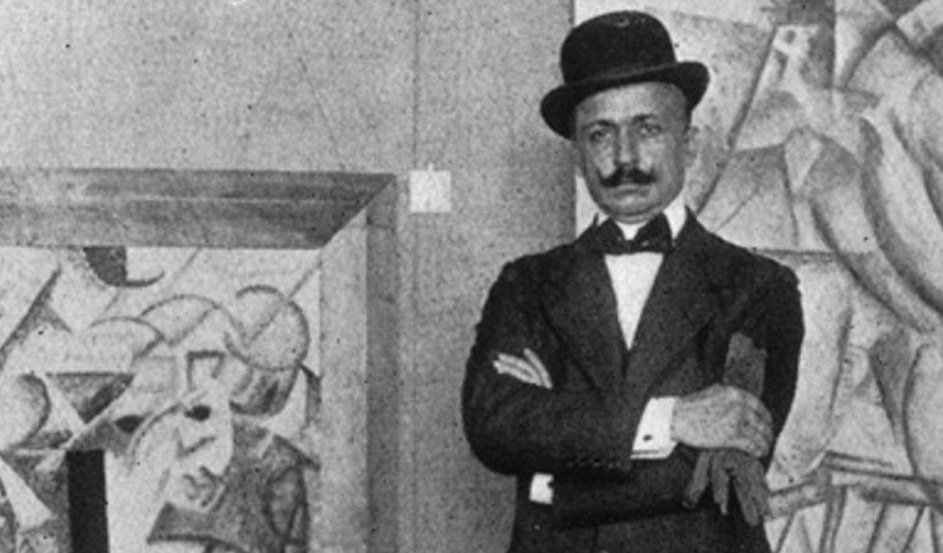
DEVELOPING A DISH – MARINETTI’S CUBIST VEGETABLE PATCH
Menu development and the creation of new dishes are among the most exciting parts of our work, when bringing a new concept to life we begin by developing a frame work which outlines the menu, service style, key ingredients & techniques, music, sensory cues and guest experience. By late last year we already knew we would have a dish titled Marinetti’s Cubist Vegetable Patch on the menu, and that the purpose of this dish was to demonstrate the relationship between tactile sensations and food textures. Can changing a tactile sensation alter the flavour and/or mouthfeel of food?
This dish was intended as an homage to Filippo Tommaso Marinetti’s Futurist Cookbook. Marinetti is known best as the author of the Futurist Manifesto, which he wrote in 1909. What made Futurist “cooking” so revolutionary was that it drew on food as a raw material for art and cultural commentary reflecting the Futurist idea that human experience is empowered and liberated by the presence of art in everyday life, that osmosis of arte-vita. Marinetti saw food as the ultimate promise of optimism — a gateway to sensual freedom, imbued with the carefree lightness of a children’s party and the intellectual enthusiasm of a literary salon. He believed that “men think, dream and act according to what they eat and drink.
In the Futurist Cookbook Marinetti outlines the eleven requirements for the ideal Futurist meal:
- Originality and harmony in the table setting (crystal, china, décor) extending to the flavors and colors of the foods.
- Absolute originality in the food.
- The invention of appetizing food sculptures, whose original harmony of form and color feeds the eyes and excites the imagination before it tempts the lips.
- The abolition of the knife and fork for eating food sculptures, which can give prelabial tactile pleasure.
- The use of the art of perfumes to enhance tasting. Every dish must be preceded by a perfume which will be driven from the table with the help of electric fans.
- The use of music limited to the intervals between courses so as not to distract the sensitivity of the tongue and palate but to help annul the last taste enjoyed by re-establishing gustatory virginity.
- The abolition of speech-making and politics at the table.
- The use in prescribed doses of poetry and music as surprise ingredients to accentuate the flavors of a given dish with their sensual intensity.
- The rapid presentation, between courses, under the eyes and nostrils of the guests, of some dishes they will eat and other they will not, to increase their curiosity, surprise and imagination.
- The creation of simultaneous and changing canapés which contain ten, twenty flavors to be tasted in a few seconds. In Futurist cooking these canapés have by analogy the same amplifying function that images have in literature. A given taste of something can sum up an entire area of life, the history of an amorous passion or an entire voyage to the Far East.
- A battery of scientific instruments in the kitchen:ozonizers to give liquids and foods the perfume of ozone,ultra-violet ray lamps (since many foods when irradiated with ultra-violet rays acquire active properties, become more assimilable, preventing rickets in young children,etc.), electrolyzers to decompose juices and extracts, etc. in such a way as to obtain from a known product a new product with new properties, colloidal mills to pulverize flours, dried fruits, drugs, etc.;atmospheric and vacuum stills, centrifugal autoclaves, dialyzers. The use of these appliances will have to be scientific, avoiding the typical error of cooking foods under steam pressure, which provokes the destruction of active substances (vitamins, etc.) because of the high temperatures. Chemical indicators will take into account the acidity and alkalinity of these sauces and serve to correct possible errors: too little salt, too much vinegar, too much pepper or too much sugar.
He also very much advocated the idea that guests should run their fingers over various textures in order to augment the mouthfeel and even flavour (+intensity) of the elements in a dish. This inspired our Marinetti Cubes. What are they you ask? Simply put they are black (to remove colour cues) 7 inch cubes with each of the sides covered in a different textured material – natural wood, velvet, plastic, velcro (both sides), and sandpaper. It took us a fair amount of time to craft these, but it was a pretty fun crafts project to take on.
We were also keen to pick up on Marinetti’s ideas regarding the use of scents to enhance flavour, and decided it was time to get out the atomisers.
Therefore the culinary approach to this dish was to focus on various textures (as to give guests a lot to explore when touching the textured cubes) and of course finding great flavours (and ingredient combinations which we would enhance through the use of scent). So after much research and testing we decided upon the following elements: Grilled paneer cheese which has been marinated in seasame paste and coffee, tarragon powder, pomegranate molasses, mushroom crisps, pickled enoki mushrooms, fried pearl barley with fried onion powder and crispy smoked bacon, smoked maple cream.
Once we serve the dish the guests’ attention is directed towards their Marinetti cubes; then a three separate points through out the course the hostess sprays 3 different scents – Tarragon, Smoked bacon and finally pomegranate. The scents serve not only to enhance the corresponding flavours in the dish but also as a cue for the guest’s to trigger their sense of smell, in doing so they consciously (or unconsciously) become more focused on this sense which should enhance all the flavours in the dish – why? because arguably 80-90% of what we perceive as flavour is down to our sense of smell (both orthonasal and retronasal), and so be engaging it more actively while eating you will experience more of the flavours in foods.

And there you have it; the concept behind our Marinetti dish!
Links;
http://archotol.jamanetwork.com/article.aspx?articleid=649745


